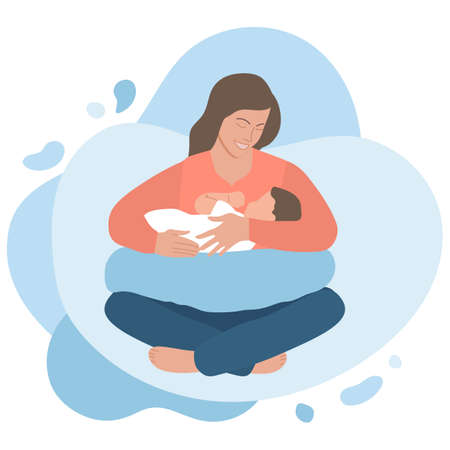Understanding SIDS and Its Impact in the UK
As a new dad myself, nothing quite prepares you for the sheer responsibility of keeping your little one safe, especially during those precious hours of sleep. Sudden Infant Death Syndrome (SIDS), sometimes called “cot death,” is every parent’s worst nightmare here in the UK. SIDS refers to the sudden and unexplained death of an otherwise healthy baby, usually during sleep. While it’s rare, it remains a real concern for British families, and understanding the risks is the first step towards prevention.
Over the years, public health campaigns like Back to Sleep (now called Safe to Sleep) have made a significant difference in reducing SIDS cases across the country. However, around 200 babies still die suddenly and unexpectedly every year in the UK, according to The Lullaby Trust. This number highlights just how important it is for parents to be aware of safe sleep guidelines and put them into practice at home.
| Year | SIDS Deaths in England & Wales |
|---|---|
| 2018 | 198 |
| 2019 | 181 |
| 2020 | 137 |
SIDS can affect anyone, but statistics show that babies under six months old are most vulnerable, with higher rates seen in winter months. It’s not about blame – even the most loving and attentive parents can be impacted. But by following simple, evidence-based guidance from trusted sources like the NHS or The Lullaby Trust, we can give our babies the safest start possible.
2. Safer Sleep Environment: Cot Position and Bedding
As a new dad, I quickly realised how important it is to get your babys sleep environment just right, especially here in the UK where the NHS has clear guidelines to reduce the risk of SIDS (sudden infant death syndrome). A lot of this comes down to practical choices about where you put the cot, what mattress you use, and how you set up your babys bedding. Here’s what worked for us, based on NHS advice and plenty of bleary-eyed nights.
Cot Placement: The Safest Spot in the Room
The NHS recommends keeping your baby’s cot or Moses basket in your bedroom for at least the first six months. Place the cot away from radiators, windows, and direct sunlight. It should be close enough so you can reach over easily for night feeds or a reassuring touch but not so close that bedding or pillows from your bed could fall in.
| Do | Don’t |
|---|---|
| Place cot beside your bed | Put cot next to curtains or cords |
| Ensure good air circulation | Position cot under shelves or heavy wall hangings |
| Keep cot away from heaters/radiators | Let pets sleep in the same bed as baby |
Mattress Choices: Firm and Flat is Best
A big temptation is to go for something soft and snuggly, but the NHS is clear: always use a firm, flat mattress with a waterproof cover that fits snugly in the cot (no more than 2cm gap between mattress and frame). Avoid second-hand mattresses if possible—they might look fine but can hide mould or lose their firmness.
Checklist for Choosing a Mattress:
- Firmness: Press down—if it bounces back quickly, you’re good.
- Waterproof Cover: Helps keep things hygienic during those inevitable nappy explosions.
- Size: Fits tightly with no gaps around the edges.
- No Inclines: Always flat—never prop one end up even if baby has a cold.
Bedding Practices: Keep it Simple and Safe
This was a surprise to me: less is definitely more when it comes to bedding. The NHS suggests using a single lightweight blanket or a baby sleep bag with fitted neck and armholes. Duvets, quilts, pillows, wedges, bumpers, and soft toys are all out until your child is at least one year old. Tuck blankets in no higher than the shoulders and place baby “feet to foot”—with their feet at the bottom of the cot—to stop them wriggling under covers.
Bedding Do’s and Don’ts Table:
| Bedding Do’s | Bedding Don’ts |
|---|---|
| Tightly tucked-in sheet/blanket (cotton) | Pillows or duvets |
| Baby sleeping bag (correct size) | Cot bumpers & wedges |
| No loose items or toys in cot | Soft mattresses or beanbags |
| Feet-to-foot position every sleep time | Bedding above shoulder height |
If you follow these UK-safe sleep basics, you’re doing everything right to give your little one the safest start—and hopefully everyone gets a bit more shut-eye!

3. Back to Sleep: Why Sleep Position Matters
One of the most important things I learnt as a new dad here in the UK was the advice about always placing your baby on their back to sleep. At first, it sounded simple, almost too basic—but the impact of this guideline has been huge. Decades ago, it wasn’t uncommon for babies to be put down on their fronts or sides. However, research and nationwide campaigns like “Back to Sleep” have shown that sleeping on the back is by far the safest position for infants.
To see how things have changed, let’s look at some figures:
| Year | Recommended Sleep Position | SIDS Rate (per 1,000 live births) |
|---|---|---|
| Early 1990s | Front or Side | Approx. 1.5 |
| Late 1990s (Post-campaign) | Back Only | Approx. 0.5 |
| Now | Back Only | <0.3 |
The drop in SIDS (sudden infant death syndrome) rates since the introduction of this advice is dramatic. It really hits home when you’re holding your own little one and thinking about how such a simple act can make such a difference. Health visitors and midwives across England, Scotland, Wales, and Northern Ireland all sing from the same hymn sheet: put your baby down on their back for every sleep—daytime naps included.
I remember my own anxieties during those first few nights at home; I’d check again and again to make sure our little girl hadn’t rolled onto her side. It might feel like you’re being overly cautious, but trust me—this guidance isn’t just tradition, it’s backed by real data and decades of experience here in the UK. So even if well-meaning relatives suggest otherwise based on “what worked in their day,” sticking to this advice gives your baby the safest start possible.
4. Room-sharing and Bed-sharing: British Approaches
One of the most common questions I had as a new dad was where our baby should sleep. In the UK, health professionals like midwives and health visitors are very clear on this. The general advice from the NHS and The Lullaby Trust is that your baby should sleep in the same room as you for at least the first six months, both during the night and for daytime naps. This guidance is rooted in research showing that room-sharing (but not bed-sharing) significantly lowers the risk of Sudden Infant Death Syndrome (SIDS).
Room-sharing: What’s Recommended?
Room-sharing means your baby sleeps in their own cot, crib, or Moses basket placed right next to your bed. I’ll be honest – it’s a real lifesaver for those middle-of-the-night feeds and nappy changes! Here’s a quick look at why it’s recommended:
| Pros of Room-sharing | Cons of Room-sharing |
|---|---|
| – Reduces SIDS risk – Easy to respond to baby’s needs – Encourages bonding |
– Can disturb parents’ sleep – Less privacy for parents |
Bed-sharing: The British Viewpoint
Now, bed-sharing (sometimes called co-sleeping) is much more controversial here in the UK. While some parents find it easier for breastfeeding or soothing a fussy baby, British health services generally advise against it—especially if either parent smokes, has drunk alcohol, taken drugs (including certain medications), or if your baby was born prematurely or had a low birth weight.
| Pros of Bed-sharing | Cons/Risks of Bed-sharing |
|---|---|
| – Convenient for breastfeeding – May help settle unsettled babies |
– Increases SIDS risk in certain situations – Risk of suffocation or falls – Not recommended by NHS unless done very safely |
The Official Guidance
The NHS and The Lullaby Trust suggest that if you do choose to co-sleep, make sure to follow strict safety guidelines—never sleep on a sofa with your baby, keep pillows and duvets away from them, and always place your baby on their back. But overall, the safest option is still having your baby in their own separate sleep space in your bedroom.
Key Takeaway for UK Parents
Stick with room-sharing for at least six months—it’s what’s advised up and down the country. If you’re ever unsure, have a chat with your local health visitor or GP—they’ve seen it all before and can give advice tailored to your family.
5. Temperature, Clothing, and Sleepwear Guidelines
One of the biggest worries for us new parents in the UK is making sure our baby doesn’t get too hot or too cold at night—especially with our unpredictable British weather. Keeping your little one at a safe temperature is crucial for reducing the risk of SIDS (Sudden Infant Death Syndrome). Here’s what I’ve learned as a first-time dad, plus some practical tips on how to dress your baby for bed, including popular British sleepwear choices like gro-bags.
Ideal Room Temperature for Baby Sleep
The NHS recommends keeping your baby’s room between 16°C and 20°C (that’s about 61°F to 68°F). It might feel cool to us adults, but babies are less able to regulate their body temperature, so this range is safest. I found it really helpful to have a room thermometer placed away from windows and radiators so I could check the nursery temp at a glance—even those colour-coded ones are brilliant for peace of mind.
How to Dress Your Baby: Layering & Sleepwear
The general rule here is that your baby needs one more layer than you would wear yourself to be comfortable at night. Overdressing can make them too warm, which increases SIDS risk, so don’t be tempted to bundle them up “just in case.” In the UK, most families opt for sleepsuits and vests made from cotton—easy to wash and gentle on delicate skin. Here’s a handy table I used during those blurry newborn nights:
| Room Temp (°C) | What Baby Wears |
|---|---|
| 16-18 | Cotton vest + long-sleeved sleepsuit + 2.5 tog gro-bag |
| 18-20 | Cotton vest + long-sleeved sleepsuit + 1.0-2.5 tog gro-bag |
| 20-22 | Cotton vest + long-sleeved sleepsuit or just gro-bag (1.0 tog) |
| Over 22 | Cotton vest only or nappy with lightweight 0.5 tog gro-bag |
Gro-bags vs. Blankets: A British Favourite
Gro-bags (sleeping bags) have become almost standard in UK nurseries—they’re safer than loose blankets, which can end up over your baby’s face. When choosing a gro-bag, check the ‘tog’ rating; this measures warmth. For most of the year in Britain, a 2.5 tog gro-bag does the trick, but during summer heatwaves, we swap down to a 1.0 tog or even 0.5 tog. Make sure you pick the right size so your baby can’t slip inside.
A Few More Handy Tips from My Experience:
- Avoid hats indoors—babies cool themselves through their heads.
- If your baby’s neck or back feels sweaty or clammy, remove a layer.
- No duvets, quilts, or pillows before age one—it’s much safer with just a fitted sheet and appropriate sleepwear.
Quick Recap: Safe Sleepwear Checklist
- Keep the room between 16–20°C (use a thermometer!)
- No loose bedding—stick with fitted sheets and gro-bags
- Add/remove layers based on room temperature, not just how you feel
6. Avoiding Smoking and Other Risks
As a new dad living in the UK, one of the most important things I’ve learnt is that keeping your home smoke-free is absolutely vital for your baby’s safety. The NHS and Lullaby Trust both stress that exposure to cigarette smoke significantly increases the risk of Sudden Infant Death Syndrome (SIDS). It’s not just about avoiding smoking around your baby—smoke particles can linger on clothes, hair, and furniture, so even popping outside for a quick fag isn’t enough. If you or anyone in your household smokes, it’s best to make quitting a priority, not only during pregnancy but especially after your baby arrives.
Keeping Your Home Smoke-Free
Here are some practical steps I found helpful in making our home safer:
| Tip | Why It Matters |
|---|---|
| No smoking inside | Prevents toxic chemicals from settling on surfaces and fabrics where your baby sleeps and plays. |
| Ask visitors to smoke outside | Even brief exposure to secondhand smoke increases SIDS risk. |
| Change clothes after smoking | Reduces ‘third-hand smoke’ contact from clothing and hair. |
Other Household Dangers Linked to SIDS
Apart from smoke, there are other household risks you might not think of at first. Things like strong cleaning chemicals, scented candles, and even some pets can contribute to an unsafe sleep environment for your baby. In our house, we swapped out harsh sprays for milder alternatives and made sure all air fresheners were out of reach. Here’s what else you should look out for:
| Hazard | How to Minimise Risk |
|---|---|
| Candles & incense | Avoid using them in rooms where your baby sleeps. |
| Poor ventilation | Keep rooms well-aired; open windows regularly if safe to do so. |
| Pets on bedding | Keep pets away from cots and sleeping areas. |
Final Thoughts from a New Dad
I know it can feel overwhelming trying to tick every box, but these small changes really add up. Keeping your home smoke-free and being aware of other everyday dangers gives your little one the safest start possible here in the UK. It’s all about building habits early and asking friends and family to help keep things safe for your baby too.
7. Where to Get Help and More Information in the UK
As a new dad, I know how overwhelming it can feel when you want to do everything right—especially when it comes to your little one’s sleep safety. The good news is that in the UK, there are plenty of trustworthy sources for advice and support on safe sleep and SIDS prevention. Here are some key places you can turn to for reliable guidance:
NHS (National Health Service)
The NHS is always my go-to for medical info. Their website has detailed guidance about safe sleeping practices, including how to set up your baby’s cot and what risks to avoid. They also provide leaflets at most GP surgeries and maternity wards.
The Lullaby Trust
This charity specialises in safer sleep advice and SIDS prevention in the UK. Their resources are super practical—they have checklists, infographics, helplines, and even free guides for parents and carers. I found their fact sheets especially helpful during those early months when every little detail seemed important.
Health Visitors
Your health visitor is a brilliant source of personalised advice. They’re trained nurses who visit you at home during the first few years of your baby’s life, offering tailored guidance on everything from feeding to sleep routines. If you’re ever unsure or need reassurance, just ask—they’ve seen it all before!
Quick Reference Table
| Resource | How They Help | Contact/Link |
|---|---|---|
| NHS | Medical guidelines, safe sleep tips, local support | NHS Safe Sleep Advice |
| The Lullaby Trust | SIDS info, sleep checklists, parent helpline | The Lullaby Trust |
| Health Visitors | Personalised support, home visits, Q&A | Contact through your GP surgery or local council |
Remember:
If you ever have questions or concerns about your baby’s sleep environment or routines, don’t hesitate to reach out. There’s no such thing as a silly question when it comes to keeping your little one safe—and these UK resources are always ready to help.


